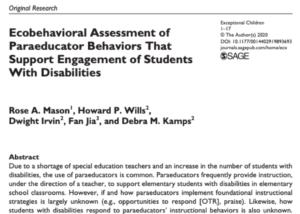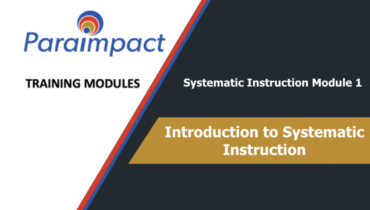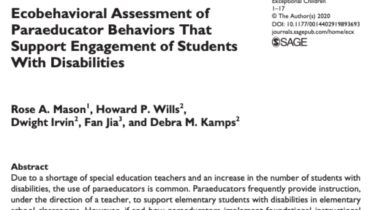
According to the U.S. Department of Education (2018), there are nearly 100,000 more paraeducators employed in public schools than special education teachers. The demand for effective paraeducators is high, due to the increasing number of students with disabilities and lack of special educators (Robinson, 2011). To assess how students with disabilities respond to instruction provided by a paraeducator, in addition to the paraeducators’ use of core instructional teaching strategies, Mason, Hills, Irvin, Jia, and Kamps (2020) conducted an ecobehavioral assessment to measure the variables of interest. Participants comprised of 41 paraeducators from 15 urban elementary schools in the Midwest, and data was collected in a total of 122 independent observations using the Multiple Option Observation System for Experimental Studies (MOOSES; Tapp et al., 1995) along with the nine-item Observer Impression Scale. The paraeducators in this study were observed to display a number of favorable behaviors when teaching students with disabilities such as spending the majority of their time actively providing instruction in a respectful and positive manner and making efforts to assist in student learning. However, results showed that paraeducators delivered opportunities to respond (OTRs) at a rate lower than average and at poor quality. Furthermore, praise was only delivered 2 times more frequently than redirections by paraeducators. Training and professional development that emphasizes the importance of praise and frequent, quality delivery of OTRs on student engagement and learning is warranted.
Mason, R. A., Wills, H. P., Irvin, D., Jia, F., & Kamps, D. M. (2020). Ecobehavioral assessment of paraeducator behaviors that support engagement of students with disabilities. Exceptional Children, 1, 1-17. doi: 10.1177/0014402919893693














Leave a Reply
You must be logged in to post a comment.